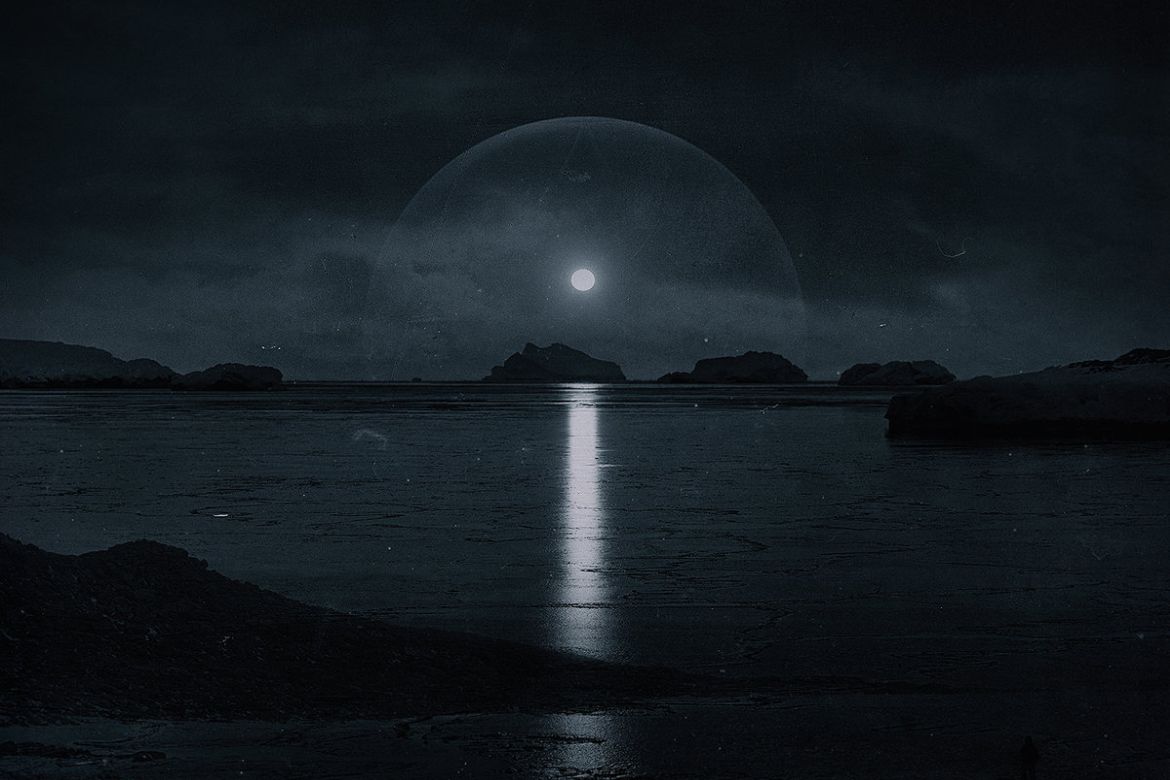“Endure, overcome.“
Post rock is a great river with many tributaries, and perhaps the most bountiful is the purely ‘instrumental rock’ stream. Many bands in this torrent take after God is an Astronaut, Maybeshewill, 65daysofstatic, and other artists who emerged in the late 00s, embracing progressive structures, esoteric pedalboards, and high fidelity production to make full-body-experience music. Declining on using vocals mean these bands often face a challenge: they must produce memorable structure and melody, whilst balancing atmosphere and beatdown. All of these must be present, and not in too high quantities, lest the music become forgettable, indistinct, or dishonest. To make matters more challenging, each listener has their own expectation for the ‘perfect mix’ and even nailing this can still do no good – nerdy post rock fans are usually itching to dismiss you as being formulaic.
Million Moons chart their course down this estuary and navigate into 2024 on a titanic iceberg of a record, I May Be Some Time. The band started as the duo of Ed Thompson and Solomon Radley, and put out their debut Gap in the Clouds to quiet fanfare in early 2022. So much more than using the pandemic as an excuse to start a band, Gap in the Clouds is a marvellous work, perhaps one of the strongest of its style to come out of the UK of late. It’s also backed by impressive live performances of its material. As they move into their next cycle, the band recently became a three-piece, adding Freddie Harrison on guitar at the start of the year, and perform as a four piece outfit complete with bass.
Another key contributor for I May Be Some Time is production from Lewis Johns, known for his production work with Employed To Serve, Svalbard, Rolo Tomassi, and Ithaca. It goes without saying, then, that I May Be Some Time is a step towards heaviness. It still handles the refinement of its sonics and songwriting that made Million Moons’ debut Gap in the Clouds a strong release. The record is shorter than the debut, but contains all of its facets, from crystalline calm to furious intensity, with a new intent on crushing heaviness. The tracks to and fro between these intensities whilst blitzing through ideas faster than ever.
The runtime is dominated by I May Be Some Time’s three longest tracks, each lasting a generous seven minutes, giving the band time to develop their ideas into powerful suites. “Unchartered Waters” kicks off with jubilant and upbeat prog metal section where one guitar is loose in the high register and another locks in the powerchords. In the middle stretch, the tempo dials back a notch to lay down the icy atmosphere that I May Be Some Time specialises in, communicated through glassy drones and gentle piano. A gripping bass tone restarts the action and “Unchartered Waters” ends where it began in triumphant reprise. Title track “I May Be Some Time” sticks to some well trodden melodies within post rock, ripping a gut wrenching delay-before-distortion solo for its central peak. The closer “Aurora” has a revelatory mood, sticking to a few musical ideas, but perhaps some of the sweetest on the album with a lofty atmosphere to match.
It’s not all your dependable post rock structures, though. “Terra Nova” is the album’s overture, working well in that context and in transition to “Unchartered Waters”, but might not appeal much if taken outside of this context. “Voice of the Wild” shows off many engrossing melodic ideas, like its sliding guitar solo that duets with the pianos. It rises and falls just as much as the longer tracks do, making it a natural single for the record. “Intruders in a Strange World” takes a cool twist with its kick drum driven build up, creating an oddly danceable moment in the middle of an icy post rock track. This is followed by all sorts of electronic tingles and jabs during a build up, and a hacking guitar that takes some tonal influence from djent. It’s also a great demonstration of Million Moons’ take on the all important ‘build up’, as it finds many a plateau to graze upon before finally springing its ultimate groove in the last minute. In other words, Million Moons do not operate with the overdone ‘pyramid-like, ‘crescendocore’ shape; they’re much more interested in developing using give-and-take motions rather than piling on the layers.
When it comes to Million Moons’ now established discography, I May Be Some Time makes for a nice contrast to their debut, offering a gratifyingly heavy sound and faster pace of ideas. A small example of this sonic success is the fine merging of keys and guitar within the album’s sonic tapestry. I’ve always felt this was an often-fumbled feat, as distorted guitars must command the mids, and piano-like sounds provide wide spectrum of sound, including their low end which communicates all important rhythmic components. Johns will have been a great choice in this regard, given his work on Rolo Tomassi’s Where Myth Becomes Memory. Million Moons’ first album is more about slow build and indulges in more reflective moments, so if you’re an instrumental post rock listener who takes those as their priority, perhaps start with Gap in the Clouds, but there’s now no wrong answer when it comes to getting to know Million Moons.
8/10
I May Be Some Time releases through Ripcord Records on the 29th May and can be pre-ordered here.

